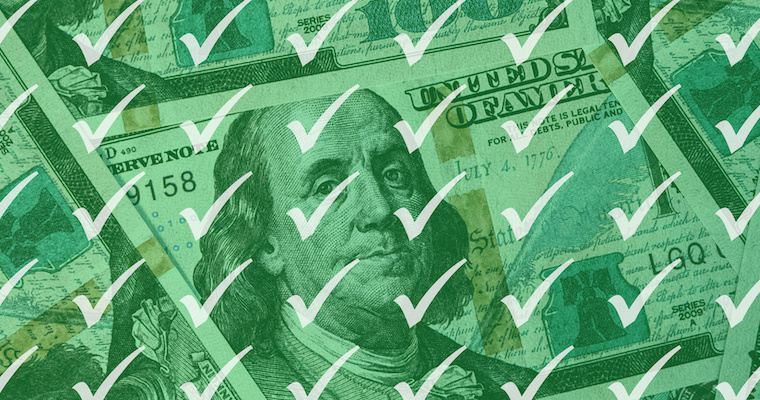Round 2 of Covid Relief: What Small Businesses Need to Know

The $325 billion second Covid relief bill -- the Economic Aid to Hard-Hit Small Businesses, Nonprofits, and Venues Act -- was signed into law on December 27, 2020. The Small Business Administration (SBA) has recently begun to take applications for the new and updated programs put in place by this second round of relief for small business.
The bill replenishes existing programs and prioritizes the needs of small business, rather than larger private or even public companies. It also creates targeted funding opportunities like the Shuttered Venues Operator (SVO) program, and sets aside funds for community-based and minority-focused lenders. So, what should small businesses know about this bill? Four things:
First, it extends the Paycheck Protection Program (PPP) loans. Second, it introduces the SVO grants, which have been created specifically to help live venue operators or promoters such as theaters, performing arts organizations, theatrical producers and motion picture theaters among others. Third, the bill exempts small businesses from paying taxes on forgiven PPP or Economic Injury Disaster Loans (EIDL), thus protecting them from unexpected large tax bills. Finally, the bill simplifies the forgiveness process for PPP loans.
Here are more details.
PPP Round 2
The relief bill allocates $284 billion to replenish the PPP program, create PPP Second Draw Loans and provide funding for the EIDL Program. Its goal is to provide better access for small businesses and limit the access of larger businesses or even public companies. These changes provide money for first time PPP borrowers ($35 billion) and allow a second round of PPP loans for eligible businesses. Some key changes are:
- It tightens eligibility for the PPP second draw to small businesses that have no more than 300 employees and demonstrate at least a 25 percent reduction in gross revenues between comparable quarters in 2019 and 2020.
- It also establishes a maximum loan size of 2.5 times the average monthly payroll costs, capped at $2 million.
- It allows small businesses assigned to the industry NAICS code 72 (Accommodation and Food Services) to receive PPP second draw loans equal to 3.5 times the average monthly payroll costs in order to help these businesses combat onerous state and local restrictions.
- It maintains existing expansions in eligibility for businesses assigned to the industry NAICS code 72 (Accommodation and Food Services).
- Borrowers receive full loan forgiveness if they spend at least 60 percent of their PPP second draw loan on payroll costs over a time period of their choosing: between 8 weeks and 24 weeks.
- It includes set-asides to support first-time PPP borrowers with 10 or fewer employees, second-time PPP borrowers with 10 or fewer employees, first-time PPP borrowers who have been made newly eligible, and second-time returning PPP borrowers.
- It expands PPP allowable and forgivable expenses to include supplier costs on existing contracts and purchase orders, including the cost for perishable goods at any time, costs relating to worker protective equipment and adaptive costs, and technology operations expenditures.
- It simplifies the forgiveness application process for smaller loans up to $150,000.
- It allows PPP borrowers to include additional group insurance payments when calculating their PPP payroll costs. This would cover insurance plans such as vision, dental, disability and life insurance.
- It allows borrowers who returned all or part of their PPP loan to reapply for the maximum amount applicable.
SVO Grants
The new bill authorizes $15 billion for the SBA to make grants to our hard-hit entertainment venues. It is designed specifically to help:
- Live venue operators or promoters
- Theatrical producers
- Live performing arts organization operators
- Museum operators
- Motion picture theatre operators
- Talent representatives
Those who fit the industry criteria must also demonstrate at least a 25 percent reduction in revenues between 2019 and 2020. Specific provisions and benefits of the SVO program include:
- It sets aside $2 billion for eligible entities that employ not more than 50 full-time employees.
- For an eligible entity in operation on January 1, 2019, grants will be for an amount equal to 45 percent of their 2019 gross earned revenue OR $10 million, whichever is less.
Grants can be used for:
- Payroll costs
- Rent payments
- Utility payments
- Scheduled mortgage payments (not including prepayment of principal)
- Scheduled debt payments (not including prepayment of principal) on any indebtedness incurred in the ordinary course of business prior to February 15, 2020)
- Worker protection expenditures
- Payments to independent contractors (not to exceed $100,000 in annual compensation per contractor)
- Other ordinary and necessary business expenses, including maintenance costs
- Administrative costs (including fees and licensing)
- State and local taxes and fees
- Operating leases in effect as of February 15, 2020
- Insurance payments
- Advertising, production transportation, and capital expenditures related to producing a theatrical or live performing arts production. (May not be primary use of funds.)
PPP Forgiveness Process
The new bill has made it less complex to receive forgiveness of a PPP loan below $150,000, and has simplified the required documentation. The basic requirements remain the same for first-round PPP loans and second draw loans. These requirements are:
- Employee and compensation levels are maintained;
- The loan proceeds are spent on payroll costs and other eligible expenses; and
- At least 60 percent of the proceeds are spent on payroll costs.
The most significant changes in applying for forgiveness for a loan under $150,000 are the new SBA Form 3508EZ Paycheck Protection Program Loan Forgiveness Application, and the decreased and simplified documentation requirements. The documentation requirements to forgive a loan under $150,000 are:
Payroll
(Provide documentation for all payroll periods that overlapped with the Covered Period or the Alternative Payroll Covered Period):
- Bank account statements or third-party payroll service provider reports documenting the amount of cash compensation paid to employees.
- Tax forms (or equivalent third-party payroll service provider reports) for the periods that overlap with the Covered Period or the Alternative Payroll Covered Period. These include tax filings reported, or that will be reported, to the IRS (typically, Form 941); and State quarterly business and individual employee wage reporting and unemployment insurance tax filings reported, or that will be reported, to the relevant state.
- Payment receipts, cancelled checks, or account statements documenting the amount of any employer contributions to employee health insurance and retirement plans that the borrower included in the forgiveness amount.
Non-payroll
(For expenses that were incurred or paid during the covered period and showing that obligations or services existed prior to February 15, 2020):
- Business mortgage interest payments: Copy of lender amortization schedule and receipts verifying payments, or lender account statements.
- Business rent or lease payments: Copy of current lease agreement and receipts or cancelled checks verifying eligible payments.
- Business utility payments: Copies of invoices and receipts, cancelled checks or account statements.


